#stylist magazine uk 2015
Text


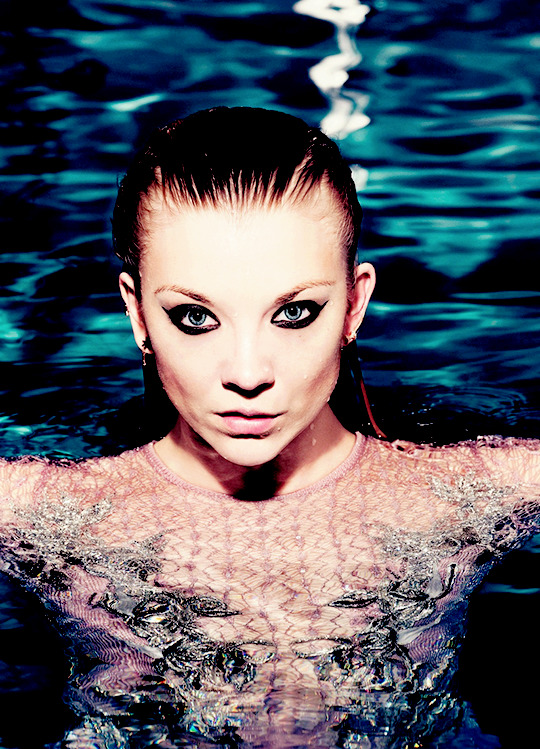
NATALIE DORMER
━ Stylist Magazine UK April 2015 ph. Simon Emmett
#tag: n#tag: actress#natalie dormer#photoshoot#stylist magazine#stylist magazine uk#stylist magazine 2015#stylist magazine uk 2015#fashion#celebrity#celebs#actress#actresses#actress edit#natalie dormer edit#edits
72 notes
·
View notes
Text
Lifestyle
Critical thinking lectures:
How has lifestyle, industrial & social changes impacted fashion & textiles?
In today’s lecture we gained understanding of what has influenced and impacted fashion and textiles in the past, in order to predict what will happen to the fashion and textiles industries in the future.
We started by exploring historical aspects that have driven these changes, to start to interpret the significance that these influential factors will play on the future of the fashion & textile industries.
We watched a video on YouTube called “100 years of fashion: women” Published on 3 jun 2015. Were we discussed as a group what drives these changes.
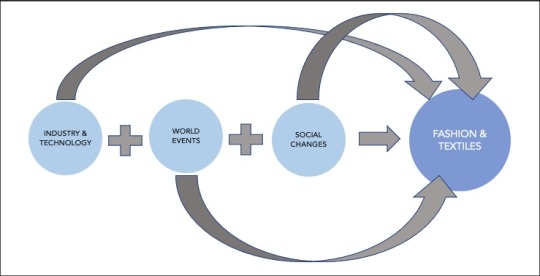
The growth of the fashion industry, caused by the industrial revolution (1870-1900s) enabled the suffragettes to use fashion as a form of branding to help promote their cause.
“They are, of course, only following in the honourable tradition set over a century ago by the suffragettes, who harnessed fashion, and the meaning of colour, as methods of communication in the early days of photography. In 1908 Emmeline Pethick-Lawrence devised the scheme of purple for dignity, white for purity and green for hope - branding for the cause, which triggered Liberty and Selfridges to start selling ranges of tricolour ribbon, underwear, bags and soap. Christina Broom…documented marches of thousands of suffragists and suffragettes wearing white dresses designed to prove to the country the dignity of their cause.”
The Guardian Cally Blackman 8.10.15 How the Suffragettes used fashion to further the cause.
https://www.theguardian.com/fashion/2015/oct/08/suffragette-style-movement-embraced-fashion-branding
1940’s
Utility Clothing Scheme: aimed to save fabric by using economical designs, eliminating laborious technical details and limiting the choice of fabrics - all to save costs.
BBC News 5.3.2015 How did WW2 change the way people dressed?
https://www.bbc.co.uk/news/magazine-31719704
1942
“Make Do and Mend was a pamphlet issued by the British Ministry of Information in the midst of WWII. It was intended to provide housewives with useful tips on how to be both frugal and stylish in times of harsh rationing. With its thrifty design ideas and advice on reusing old clothing, the pamphlet was an indispensable guide for households. Readers were advised to create pretty ‘decorative patches’ to cover holes in warm garments; unpick old jumpers to re-knit chic alternatives; turn men’s clothes into women’s; as well as darn, alter and protect against the ‘moth menace’.
Manage with and repair the possessions one already has rather than buying replacements. "the austerity of the war years taught her to make do and mend" British Library, Learning resources https://www.bl.uk/learning/timeline/item106365.html
Examples of “make do and mend” women’s suit made out of a man’s pin stripe suit, a child’s cloak made from an old blanket.


BBC News 5.3.2015 How did WW2 change the way people dressed? Fashion on the Ration is at the Imperial War Museum, London, until 31 August 2015.
https://www.bbc.co.uk/news/magazine-31719704

The “New Look” exploded in Paris in 1947 (in contrast to the utilitarian approach adopted in the war) lead by the pioneering designer Christian Dior, who empowered women through fashion.
“Throughout the war, cloth and labour shortages had limited the amount of fabric and trimming that could be used… jackets had been masculine, shoulders square and skirts short and straight… belts, seams, collars and trouser turn-ups had to conform to certain restrictions …” Yet, only two years after the end of the war, here were ankle-length skirts whose hems measured up to 40 metres in circumference. Here was a fashion that emphasised femininity, with rounded shoulders, waists nipped in tight, and hips and busts exaggerated by bodices and padding.
The New Looks striking stylistic legacy lived on well into the 1960s.
https://www.independent.co.uk/life-style/fashion/news/the-look-that-shocked-the-world-1278048.html
https://www.telegraph.co.uk/fashion/events/how-haute-couture-rescued-war-torn-paris/
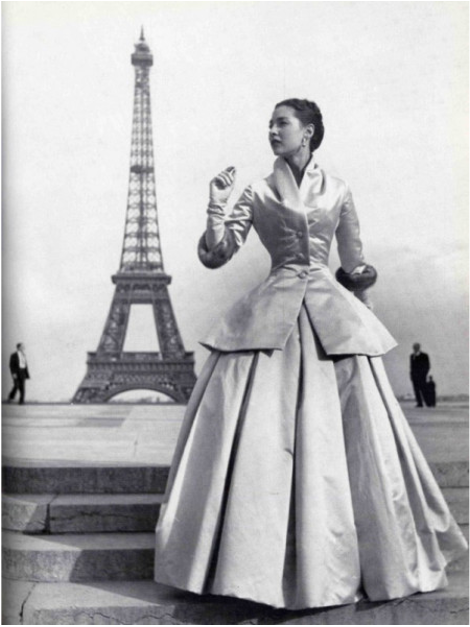
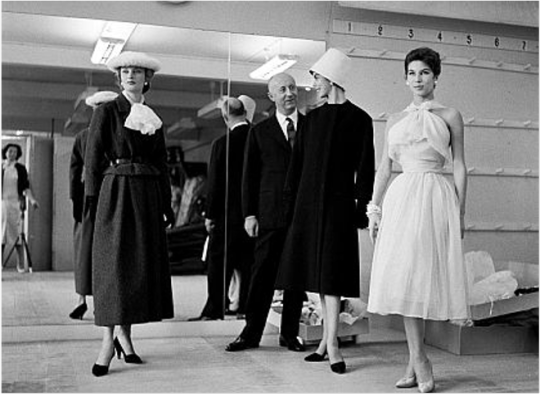
”Women, with their sure instincts, realized that my intention was to make not just more beautiful but also happier,” said Dior: A businessman as well as a poet, he made fashion responsible for expressing society's desires, and showed it how to communicate…” ref book Dior
My weakness ... is architecture. I think of my work as ephemeral architecture, dedicated to the beauty of the female body.
http://www.catwalkyourself.com/fashion-history/1950s-1960s/
Assouline publishing 2004 Dior Marie - France Pochna

Working in groups based on the following decades: 1960s, 1970s, 1980s, 1990s and 2000s. In our group we researched fashion in the 2000s. We made a mind map that considered the above influencing factors that have impacted on the fashion designers from this decade. We recorded the effect of these causes and how they have driven the design, materials and production at this time.��
2000s Fashion:
Casual clothing and leisurewear were big trends in the early 2000s, a casual look for women would have been, crop tops, hoodies, low-rise flared jeans, cargo pants, daisy dukes, jean skirts, off the shoulder tops, ribbed sweaters, with platform sandals, ugg boots, or sneakers.
After researching I found technology and Y2K bug (problem in the coding of computerized systems that was projected to create havoc in computers and computer networks around the world at the beginning of the year 2000) had a huge impact on fashion in the early 2000s. The colour palette was full of shiny black tones and reflective metallics. The Y2K trend was worn on a daily but mainly reserved for going out. Popular outfits for women included mesh or handkerchief tops, box-pleated or leather skirts, shiny pants, and sparkly shoes. Britney Spears was a trendsetter for this type of style. For men, Y2K looks involved leather jackets, a statement dress shirt, and chunky shoes.
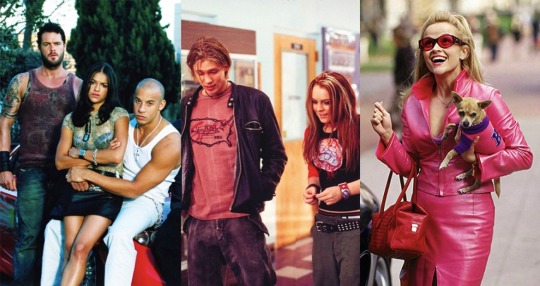
Mid 2000s fashion - Fashion started to take cues from 1960s bohemian looks. Yoga pants, low-rise jeans, cowl-neck shirts, peasant tops, capri pants, cropped jackets, and dresses over jeans was a popular outfit choice for women. These outfits were paired with accessories, such as, chunky belts, aviator sunglasses, jelly bracelets, ties worn around the neck or as belts, ballet flats, and platform boots. The 1960s revival looks were also popular with men. Including light wash bootcut jeans, cargo shorts, classic rock t-shirt, fitted cowboy shirts, henleys, polos with popped collars, and seersucker suits.

Late 2000s fashion - For women, crop tops were replaced with camisoles and miniskirts, bubble skirt, and sweater dresses. There was also a 1980s and 1990s revival of neon colours, animal prints, geometric shapes, light denim jeggings, and ripped acid washed jeans that were worn with gladiator sandals, ballet flats, and headbands. The oversized look became popular, but it was more subtle than the traditional 80s fit. Men’s late 2000s fashion was a mix of 1950s and 1980s throwbacks, with letterman and black leather jackets, overcoats, slim cut jeans, Ed Hardy t-shirts, flannel shirts, and V-neck sweaters. Paired with dad hats, wayfarers or aviators, motorcycle boots, converse, vans, or sneakers.

Hip-Hop had a influence on the 2000s fashion, many rappers influenced fashion with their own clothing lines. Including Jay-Z, Diddy, Nelly, and 50 Cent. Many looks included baggy jeans, tall t-shirts, sports jerseys, velour suits, bubble jackets, and puffer vests paired with headbands, sweatshirts, Timberland boots, and sneakers like Adidas Superstars or Nike Air Force 1s.

Streetwear is brand focused casual clothing, like jeans, tees, and sneakers. In the late 2000s popular streetwear styles included distressed skinny jeans, loose fitting tops, loose or fitted tracksuits, track pants, hoodies, graphic t-shirts, vintage thrift shop tees, and Tommy Hilfiger and U.S. Polo Assn brands. Sneakers were an important part of the style, retro Nike Air Jordans and Adidas Yeezys.

Emo fashion became popular in the mid 2000s and took cues from goth and punk styles. Outfits were often all or mainly black with skinny jeans, band t-shirts, studded belts, and checkered vans. Every emo look was completed with the right hairstyle, choppy cuts with long side-swept bangs dyed black, platinum blonde, or a bright colour.

Athleisure Wear - If you wanted to be comfortable yet fashionable in the early 2000s the velor tracksuits was the go to. Britney Spears, Beyonce and Eminem to Diddy were on on the tracksuit craze. They were brightly coloured and emblazoned with rhinestone logos and phrases. It was also in to mix track pants with dress clothing and design shoes to elevate the look.

The Beatles were one of the most influential bands in history, taking their fans on a journey of fashion styles through the decades from rock to teddy boys to hippie years.
(1962-1964) - (1964-1966)
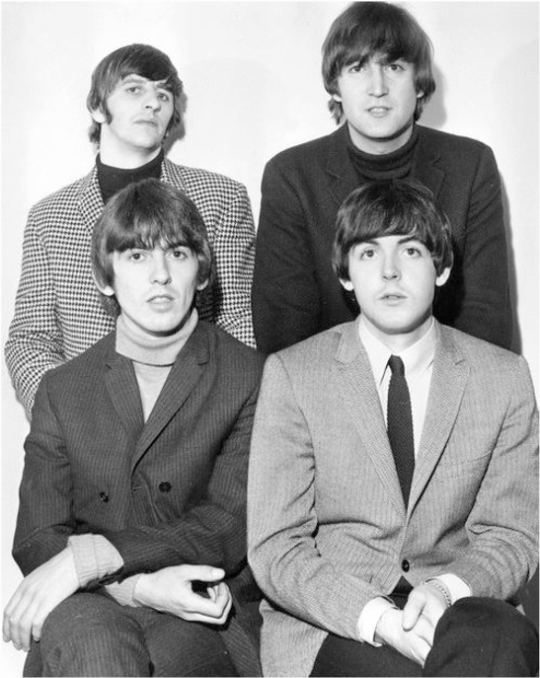
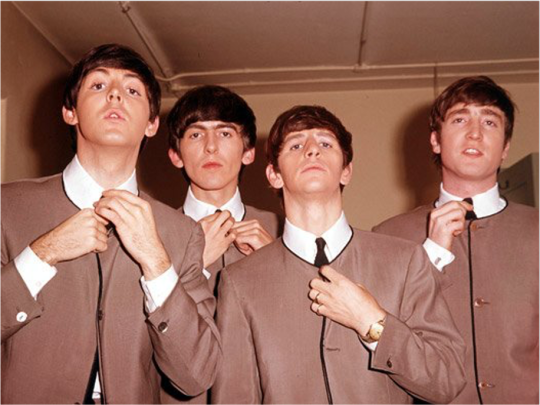
Did technology play a part in influencing this style?
During this lecture we watched a video called The Beatles Yellow Submarine.
Exaggerated shoulder pads epitomises the Power Dressing of the 1980’s.
https://www.youtube.com/watch?v=uOlwwoZLoKE&feature=youtu.be

In the 1980s Power Dressing in the UK grew from a new money focused generation, in London, creating a bee style. This look was patented by shows such as Dynasty and Dallas, where actors such as Joan Collins and Linda Evans dressed as female power dresses. Shoulder-pads and sharply tailored suits ruled and has been continued to be used by women today to signify power.
https://www.independent.co.uk/life-style/fashion/features/what-is-power-dressing-1807353.html

THATCHER USED FASHION AS A POLITICAL TOOL
“With ‘power dressing’ she could tap into the image of a career woman but her reputation as a fierce leader then drove her to wear clothes that might ‘soften’ her image, which was why she wore pussy bow blouses. A symbol of the past reflecting a more conservative femininity, the pussy bow blouse clashed with the aggressive power suits. “This was the paradox of the Thatcher image: at once she sought to embody conservative values while also seeking to assert her right to power as a woman. Dr Tyan”
https://www.independent.co.uk/life-style/fashion/margaret-thatcher-clothes-dress-suits-power-dressing-fashion-impact-women-victoria-and-albert-museum-a7480026.html
Margaret Thatcher: Fashion as a Political Tool
https://www.youtube.com/watch?v=qynZ0NEHH4M&feature=youtu.be
How did Margaret Thatcher change Britain:
Privatisation
London became a leading financial capital
Open all hours
The decline of the north
Lessened role of trade unions
Northern Ireland peace process
Education reforms – league tables
Home ownership
Power dressing
Prestige for armed forces (Falklands)
Transformed Labour party
Julian Coman Sun 14 Apr 2013 10.00 BST https://www.theguardian.com/politics/2013/apr/14/margaret-thatcher-20-changes-britain
My own research on Margaret Thatcher -
When looking at pictures of Margaret Thatcher, after the election in 1979, a well-dressed woman with her individual style is clearly shown. She began to create her image and appearance as an example of how women in power should dress. Thatcher was a confident and stern business woman however there was a clear contrast to the feminine clothing she wore. She used her clothing and style as an act of self - definition that disguised herself from others showing her individual identity as Prime Minister. Thatcher styled herself appropriately for political occasions, the most occuring colour Thatcher wore was royal blue. With her power suits and the legendary pussybow blouses, that made her a fashion icon, she was known for her haircut, her pearls, and her handbag. Her hairstyle was one of the famous features of Margaret Thatcher, as straight and precise as the lady herself.
One great example on how her style, outfits and political power were set together was before she became Prime Minister. Thatcher wore hats because not only they suited her well but were symbols of her status and class. As the leader of a major political party, her hats seemed to be a political problem. It was a problem because middle class people with conventional attitudes were prejudiced towards her. This was not the picture of a leader the party wanted to draw. Consequently, after her election to British Prime Minister she only wore hats for State ceremonies and foreign tours but not on polictail occasions anymore.
The Fashion World Supports Pussy Riot
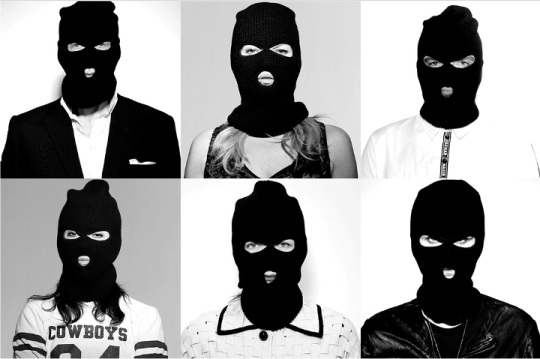

Fashion empowered to dictate and influence world events and social changes
17th April 2015 Jamie Waters Fashion’s most iconic political statements; The fashion world supports pussy riot & we’d rather go naked than wear fur.
https://www.dazeddigital.com/fashion/article/24414/1/fashion-s-most-iconic-political-statements
https://www.vogue.co.uk/article/clothing-fashion-protest
In pairs with reference to the timeline identify another advancement in technology that has impacted on social events, which in turn has driven a change in the fashion industry?
....
Brand Report
In groups we researched information about the brand Lazy Oaf, we created a detailed report which covers each of the 8 elements that make a band pitch. These elements include: Vision & purpose, brand identity, customer, price, product, place, promotion and packaging. In our group we decided to each choose an element to research and talk about, I picked promotion.



Lazy Oaf’s Brand Identity is definitely something I would take away and incorporate into our brand. We want to create personal products that our customers love and respect. Minimize environmental hazards through being sustainable but with fair prices. We also discussed as a group giving back to charities with a percentage of money we make as a brand.
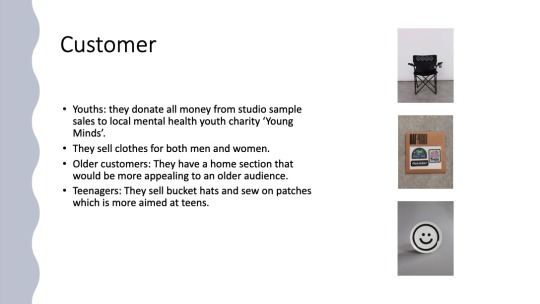




This group task gave us practice with working together, assigning roles and discussing information online. We decided to split the work fairly so that everyone had an equal amount of work to research and present. As we had to present this group task to our peers it helped us practice for when we present our brand.
13 notes
·
View notes
Text
GHD
A HISTORY OF GHD
ghd are leading the way in understanding the science of hair. Our Research & Development labs in Cambridge are unique in combining physicists, material scientists, product designers and hair specialists to focus solely on the terminal manipulation of hair. The facility allows for scientific testing on hair and the development of new products, as well as product performance testing.
2001
When it all started
· 3 hairdressers bring a new and innovative straightening iron from Korea to the UK.
· Rapidly becomes the must- have styling tool. Sold through salons, fan base quickly develops through the recommendation of stylists.
2003 - 2007
International Phenomenon
· ghd goes international, entering Australia, South Africa, Spain, Italy, Scandinavia, Germany and France.
· ghdhair.com launches, bringing the brand online.
2010
Unique R&D Facility
· ghd opens a research and development lab dedicated to the thermal manipulation of hair - a world first. ghd now holds 117 patents, 37 granted and 80 pending.
2012
Building a premium powerful beauty brand
· Expansion into premium retail gives proximity to luxury beauty brands such as Chanel, Dior and Lancôme.
2015 - 2018
Innovative Styling Portfolio
· ghd launches into new categories: hairdryers in 2012 with ghd air®, followed by curling in 2014 with ghd curve®.
· Our core styler technology performance is enhanced via tri-zone® technology, ultimately creating our most premium styler, ghd platinum®.
· New dual-zone technology introduced and our ghd gold® styler reimagined, delivering smoother, sleeker and healthier looking hair.
To the future
From International to Global
· Rapid growth in USA, Asia, Middle East and beyond. More exciting NPD launches to come.

https://www.ghdhair.com/about-us/the-history-of-ghd

https://www.regissalons.co.uk/shop/ghd

https://www.lebook.com/creative/ghd-wanderlust-advertising-2017

https://www.advertisingarchives.co.uk/detail/87519078/1/Magazine-Advert/GHD/2010s
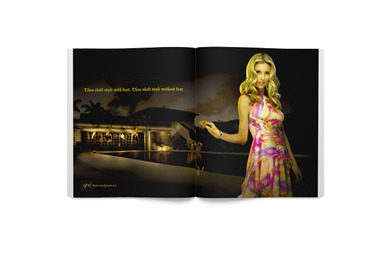
https://creativepool.com/roy/projects/ghd-for-ghd

http://www.cbhair.co.uk/ghd-platinum/4589649336

https://jessiloublog.com/styling-it-out-with-ghd-in-liverpool-one/

https://www.regissalons.co.uk/shop/ghd
1 note
·
View note
Text
It all started in 2001 when 3 hairdressers named Martin Penny, Gary Douglas and Robert Powls brought a new styling tool (straighteners) over to the United Kingdom from Korea. They came together and bought the rights to the straightener from an inventor in Korea and based themselves in Leeds, Bradford, England. This tool became well known by all but there had been no advertisement campaign it was all through word of mouth. But the price was quite high at £100, it was thought that nobody would spend that kind of money on straighteners but then GHD were everywhere all the celebrities had one. This is when they started flying of the selves, salons couldn't sell it fast enough. All stylists were recommending this brand new and exciting styling tool. Within 2 years Jemella Limited (Trading company for GHD) had made £12 million, that was 4 times more than what was expected. Moving forward to 2003 through to 2007 GHD brand goes international. You can see it all over the world in places likes Australia, South Africa, Spain, Italy, Scandinavia, Germany and France. The brand also built their website and it was launched in these years. 2003 was when the first official advertisement for GHD was broadcasted on TV. 2004 the turn over was up to £37 million and GHD launched a limited addition pink straightener. Which has now become a yearly addition and every straightener bought the brand gives £10 to breast cancer research. In 2006 the trading company was sold to Lloyds Development Capita for £55 million but they didn't keep it for long as it was sold again 11 months later to Montagu Private Equity for £160 million. Now in 2010 GHD opens up the world’s first lab that is focused on the thermal manipulation of hair. At this time GHD held 117 patents, 37 were granted and 80 were pending. In 2012 they expanded and reached out to only the best of the best beauty brands to sell their products. 2015 is when GHD started to grow their product base and it start with a hairdryer. They then continued to bring out styling tools to curl in 2014. GHD was working with tri-zone to produce the GHD Platinum and they made an updated version of the GHD Gold. GHD are planning on going global soon. The GHD company are a huge success and there is no sign of it coming to an end anytime soon.






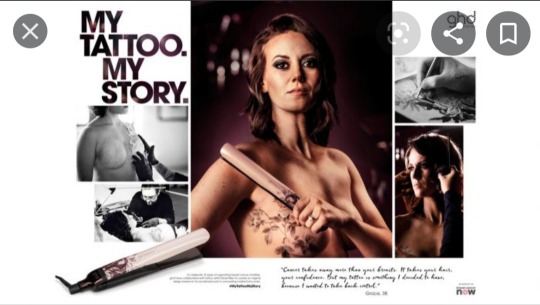
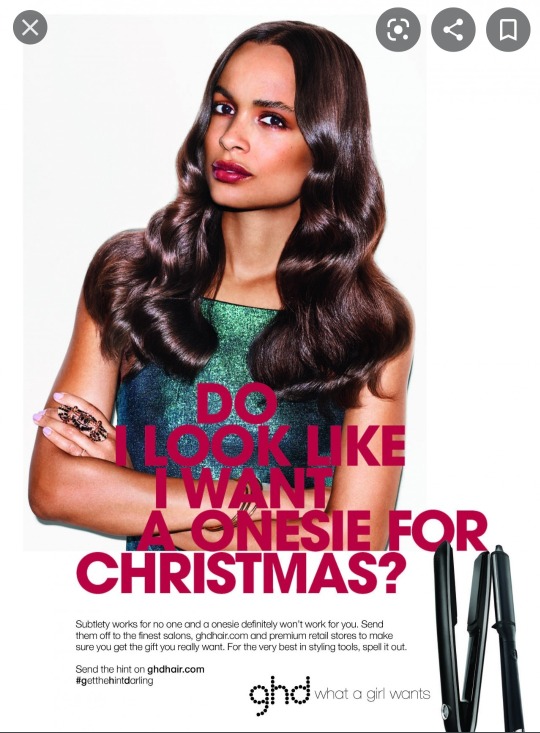
All links are down below:
https://www.thedrum.com/news/2014/10/27/subtlety-doesn-t-work-suggests-ghd-ad-encouraging-woman-ask-what-they-want-unwrap
https://marcommnews.com/southpaw-launches-ghds-global-pink-campaign-for-cancer-charities-worldwide/
http://www.loveretouch.com/gallery.php?series=1711769
https://www.alamy.com/stock-photo-2010s-uk-ghd-magazine-advert-97992160.html
https://www.advertisingarchives.co.uk/detail/57596/1/Magazine-Advert/Ghd/2010s
http://walk-ing-tall.blogspot.com/2011/02/ghd-advertising-campaigns.html?m=1
http://www.jaw24.com/ghd
http://rachelandizy.co.uk/ghd-Campaign-2016
1 note
·
View note
Photo



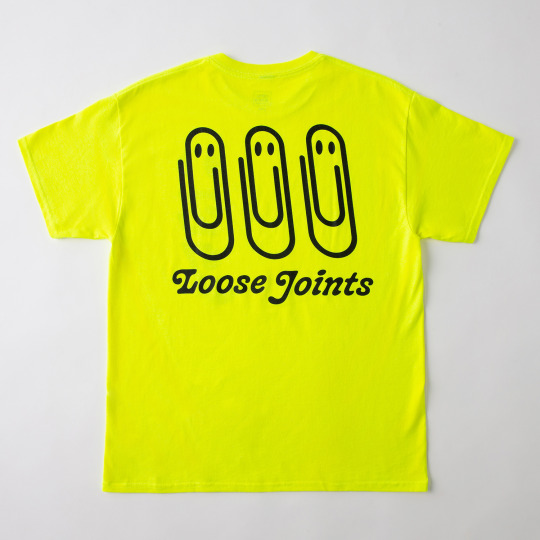

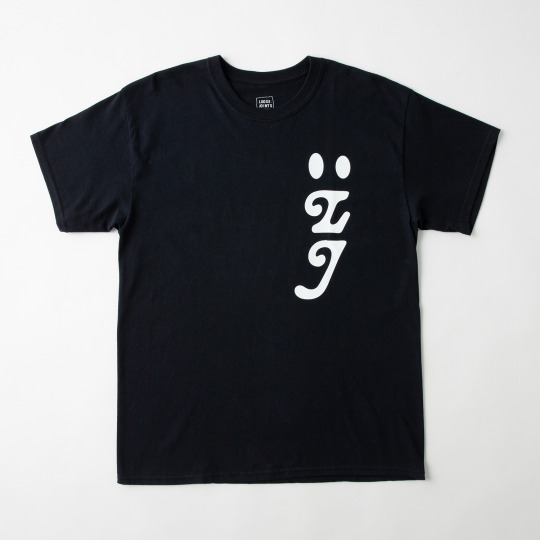
BARNZLEY
シャツレーベル”Wemblex”の創業者。
1988年、イギリスのセカンド・サマー・オブ・ラブ・ムーヴメントは、春からブレイクして、夏にはイギリス全土の社会現象となった。実は、その到来を予言していたかのような 一冊の雑誌が存在する。
i-Dマガジン1987年12月1988年1月合併号である。
表紙のスマイリーフェイスのアートワークの製作時期は1987年11月。デザインは、当時 i-Dのスタイリストであり、CHANEL No.5(ヴィクトリア・アンド・アルバート博物館に展示)、Hermes、GucciのブートレグTシャツを1987年にイギリスと日本で流行らせたバーンズリーだ。
当時、Hermes、Gucciは全くイケているブランドではなく誤解を恐れずにいえばストリートでは”死んでいた”。これらのNYヒップホップ的カルチャー文脈の視点で作られたブートレグTシャツは、本家によってブートレグされて2018年にリリースされている。マルコム・マクラーレンの文脈を引き継ぐバーンズリーは1993年に Acupuncture、1997年にLowrider London、2002年にZolter the Maginificient、2007年にA Child of Jago、2015年にThunders UK、2018年にWemblex、2019年に .wave Instituteなどに携わった「生きるロンドン・ストリートカルチャー」。日本との交流も深く、数多くのコラボレーションが今もなお続いている。
Founder of the shirt label [Wemblex] In 1988, the United Kingdom's Second Summer of Love Movement broke out in the spring and by the summer it became a social phenomenon throughout the United Kingdom. In fact, there is a magazine that seems to have predicted its arrival. That magazine is the i-D Magazine combined issue of December 1987 and January 1988. The smiley face artwork on the cover was produced in November 1987. The artwork design was created by Barnzly - who was an i-D stylist at the time and then went on to make the CHANEL No. 5 (exhibited at the Victoria and Albert Museum), Hermes and Gucci bootleg T-shirts which were popular in the UK and Japan in 1987. At the time, now well known brands like Hermes and Gucci were very unpopular and they were ‘’dead’’ on the street. However, thanks to the influence of New York hip-hop culture, bootleg T-shirts were created and then bootlegged and released by Barnzly in 2018. Barnzly, taking over the context of Malcolm McLaren, was engaged in Acupuncture in 1993, Lowrider London in 1997, Zolter the Maginificient in 2002, A Child of Jago in 2007, Thunders UK in 2015, Wemblex in 2018 and Wemblex in 2019 - the “Living London Street Culture" and was involved with .wave Institute and others. The exchange between UK and Japan runs deep and many collaborations are still continuing to this day.
https://www.instagram.com/barnzley
https://www.instagram.com/wemblex_
LOOSEJOINTS20FW_BARNZLEY
1 note
·
View note
Text
Culture Talks with Constance Kostrevski
Constance Kostrevski has been taking photographs since the age of eight when she received her first camera from her grandmother. Photography was a family affair; her grandfather was a portrait photographer back in Macedonia. Fascinated by her family’s history and culture, Constance began by taking portraits of her grandmother after school, taking the time to choose her outfits and adjust the setting and lighting. She soon fell into the role of photographer and stylist.
It was her interest in fashion from styling these shoots that inspired her to study fashion merchandising and marketing, earning a BA from the Illinois Institute of Art, Chicago. In 2004 she was one of twelve amateur photographers chosen for a summer residency at The School of Visual Arts, New York.
Constance lived and worked in Chicago, finding inspiration in many places: her vibrant neighborhood of Pilsen, friends, travels, architecture, nature, and music. An adept portrait photographer, Constance's ability to connect with her subjects allows her to not only capture a portrait but also to tell a story. She has defined herself through the people she shoots, allowing her portraits to show that everyone has a story to share. During this time she built connections within the Chicago music scene, hosting the pioneering online music stream Cutz on Cuts, hosting and Djing with the boogie musters and curating Record Store Day 2015 at K Starke records, now Wild Prairie Vinyl & Vintage.
From 2015-2018 She ran an after school program in collaboration with The National Mexican Museum of Fine Art - Chicago, where she taught analogue photography to children aged 7-14. At the same time Constance's love of music developed, releasing records with Beyond Luck and DJ Moppy. As well as holding down residencies at Murasaki, Fox Bar and Booze Box all in Chicago. She has worked with many artists and musicians, including comedian Hannibal Buress on My Name Is Hannibal and Live From Chicago, musician Radius on his album Neighborhood Suicide, musician Moppy on his album The Seven Wonders of the Sea, as well as with musical group The Cool Kids which was included in the “Next 1000” issue for URB magazine. Her work has been featured in print and digital publications, including the Chicago Reader, Chicago magazine, i-D magazine, Time Out Chicago, URB Magazine, XLR8R, Pitchfork and Getty images.
In 2018, Constance relocated to London, UK where she continues to draw inspiration from her new city surroundings. From volunteering at Artbox London, a charity that offers art programs for adults with learning disabilities, to volunteering with the NHS. Her work continues to inspire the art of working and serving her community through her natural abilities to create.
Connect with Constance:
Website
Instagram
Soundcloud
Grow the CS Channel & Circulate the energy of LOVE by donating:
Paypal
Cash app
Venmo
With Love,
Rebecca Muñoz
Founder, Cultured Society
Hello, World!
#spiritualawakening#spiritualcoach#interview#influence#innerhealing#london#unitedkingdom#unitedstates#create#createyourlife#leaderscreateleaders#higherlearning#higherperspective#highercalling#love#selflove#holistichealing#holistichealth#wealth#knowledge#education#freedom#freedomthinkers
0 notes
Text
References
“5 Sources of Inspiration for the Stylist.” Istituto Modartech, 12 Sept. 2016, www.modartech.com/en/5-sources-of-inspiration-for-the-stylist.html. Accessed 16 Apr. 2021.
“10 Songs for Social Change - Amnesty International Australia.” Amnesty International Australia, 31 July 2019, www.amnesty.org.au/10-songs-for-social-change/. Accessed 7 Apr. 2021.
“About Chi Modu.” Www.chimodu.com, www.chimodu.com/about. Accessed 21 May 2021.
“CD Duplication in Standard Jewel Cases and Slimline Jewel Cases.” Band CDs, www.bandcds.co.uk/all-others/cds-jewel-cases/. Accessed 4 May 2021.
“Danny Clinch Photo — Recent Work.” Danny Clinch, www.dannyclinch.com/photo/recent-work. Accessed 23 Apr. 2021.
Dazed. “Dazed & Confused Magazine | Fashion, Art, Music, Film, Ideas | Dazed.” Dazeddigital.com, 2019, www.dazeddigital.com/. Accessed 9 May 2021.
“Fashion Week NYC: Top 10 Songs for the Runway.” Billboard, www.billboard.com/articles/columns/the-hook/475270/fashion-week-nyc-top-10-songs-for-the-runway. Accessed 15 May 2021.
“Festival of Political Photography 2019: Potentiality.” Wall Street International, 7 Mar. 2019, wsimag.com/art/50941-festival-of-political-photography-2019-potentiality. Accessed 4 Apr. 2021.
“Fight the Power (Public Enemy Song).” Wikipedia, 30 Jan. 2020, en.wikipedia.org/wiki/Fight_the_Power_(Public_Enemy_song). Accessed 4 Apr. 2021.
Interview, An. “An Interview with ‘Broobs,’ the Artist behind Instagram’s Favorite Political Posters.” Eye on Design, 9 July 2020, eyeondesign.aiga.org/an-interview-with-broobs-the-artist-behind-instagrams-favorite-political-posters/. Accessed 4 Apr. 2021.
“Jean-Michel Basquiat.” Biography, 25 July 2014, www.biography.com/artist/jean-michel-basquiat. Accessed 4 Apr. 2021.
“Login • Instagram.” Www.instagram.com, Instagram.com/officialjafro. Accessed 12 Apr. 2021.
“Matthew Henson.” Stylectory, www.stylectory.net/matthew-henson/. Accessed 16 Apr. 2021.
McDaniel, Morgan. “Top Dawg Entertainment Is Building a Hip-Hop Dynasty.” REVOLT, 14 Oct. 2016, www.revolt.tv/2016/10/14/20817430/top-dawg-entertainment-is-building-a-hip-hop-dynasty. Accessed 10 Apr. 2021.
McQueen, Alexander. Https://Www.endclothing.com/Gb/Mcq-Alexander-Mcqueen-Oversized-Monster-Patch-Hoody-535621rmt09-1000.Html. Accessed 8 May 2021.
Nast, Condé. “Culture.” GQ, www.gq.com/culture. Accessed 4 Apr. 2021.
Newell-Hanson, Alice. “Meet the Stylists behind 2016’S Most Major Musicians.” I-D, 5 Oct. 2016, i-d.vice.com/en_us/article/qv87jm/meet-the-stylists-behind-2016s-most-major-musicians. Accessed 13 Apr. 2021.
“PEROU.” Www.perou.co.uk, www.perou.co.uk/. Accessed 23 Apr. 2021.
Pometsey, Olive. “The ELLE List: 6 Songs You Should Listen to Right Now according to Jorja Smith.” ELLE, 5 June 2018, www.elle.com/uk/life-and-culture/a20978123/jorja-smith-playlist-elle-list-2018/. Accessed 4 Apr. 2021.
“Speak.” Open.spotify.com, open.spotify.com/track/6ffCTLnwgOBNv09A9UCRl9?si=YwCeuKP3R7aNf8DXta65aQ. Accessed 12 Apr. 2021.
Tate. “Art and Artists | Tate.” Tate, 2016, www.tate.org.uk/art. Accessed 3 Apr. 2021.
“TDE Apparel.” Top Dawg Ent, txdxe.com/. Accessed 10 Apr. 2021.
Terrell, Dontaira. “9 Socially Conscious Hip-Hop Songs That Helped Define the ‘90s.” Atlanta Black Star, 2 July 2015, atlantablackstar.com/2015/07/02/10-socially-conscious-hip-hop-songs-defined-90s/. Accessed 7 Apr. 2021.
Williams, Randall. “Experience: The Never Story.” Medium, 16 June 2019, medium.com/@R_Williams03/experience-the-never-story-3f08d7c228f8. Accessed 13 Apr. 2021.
0 notes
Link
For years, style bibles such as Vogue and Elle have found their exclusivity undermined by bloggers, who – with huge numbers of Facebook, Twitter and Instagram followers – have won over the designer brands that would normally only deal with major publications. Inevitably, this tension occasionally breaks the surface, as when Vogue editors recently lashed out at fashion bloggers in their Milan fashion week round-up column.
Criticising fashion bloggers for the practice of being paid to wear certain outfits, the Vogue journalists called the bloggers “pathetic”, accused them of “looking ridiculous” and decried the whole affair as “all pretty embarrassing”. Scathingly, Vogue’s creative digital director Sally Singer wrote:
Note to bloggers who change head-to-toe paid-to-wear outfits every hour: please stop. Find another business. You are heralding the death of style.
This is not the first of such broadsides from fashion writers. In 2013, the New York Times’ renowned fashion journalist Suzie Menkes berated the “poseurs” gathered outside fashion shows, waiting for keen street-style photographers to take their picture. It was the first of many slaps in the face for fashion bloggers, who were branded “wannabes” desparate for attention.

Blogger Chiara Ferragni was even featured the cover of Vogue’s Spanish edition. Vogue
Yet since then bloggers have only gained in popularity, with the Spanish edition of Vogue even featuring the Italian model and blogger turned fashion designer Chiara Ferragni on its cover in 2015. For a blogger to reach the cover of Vogue, the very pinnacle of style, suggested that the fashion bloggers had been finally accepted. It seems not.
Perhaps Vogue’s biggest bugbear is that bloggers are invited to sit on the front row at fashion shows – an honoured position previously reserved for celebrities and editors of glossy magazines. Yet bloggers have become a hybrid of the two – part editor, part celebrity – and thanks to their enormous social media presence they have developed the style-influencing selling power built to match both.
Fashion blogging is hard work
Certainly, fashion designers and brands were quick to recognise the power wielded by bloggers. If offering a blogger an invitation to sit on the front row wearing their latest designs encouraged sales, why wouldn’t they?
It’s grossly insulting to suggest bloggers don’t work hard for their position. Bloggers often style themselves, take their own photos, attend fashion shows, write their own copy and design and edit their websites as well as provide the constant updates to their social media channels required to keep their audience engaged. Especially when starting out, they will have to do all this for themselves.
Standing in the cold for more than an hour in sky-high heels (because being photographed is part of your job) before sitting on a dusty floor or trying to catch a glimpse of the runway from behind 15 rows of people is a due all true fashion lovers have paid. How much easier it must be to walk straight in from your warm company car with no queue to face – and no heavy camera to carry as your publication will have sent their own photographer. A whole team brought in to report on a single day’s events.
And let’s not forget that running a blog is essentially an unpaid role, and how – or if – the owner chooses to make money from it is up to them. One way of making it pay is to work directly with fashion brands. A brand might gift or lend a blogger some items to wear. The blogger gets to create a new outfit and something to write about, and the brand gets exposure – surely a mutually rewarding relationship?
Dispersing fashion
Something Vogue’s writers forget is that the price of the garments we see on the runway make them unobtainable for most people. They are displayed in the glossy pages of Vogue as “aspirational” items. For most, the only experience of the latest fashion designs will be in the trickle-down version produced for the budget-friendly high street. This is how the fashion cycle works – and magazines have played a huge role as gatekeepers. The rest of the world only sees those designer pieces from the runway that magazine editors chose to include.
Fashion bloggers have worked around this filter, by publicising the looks from the shows they choose and by wearing borrowed (or gifted or purchased) garments from the show. The insular walls of the fashion industry have been shaken – and fashion has became more democratic.

Matteo Bazzi/EPA
With the growing power of bloggers came a decrease in power of the fashion magazine. The magazines now attack the bloggers for the same things that in effect magazines and magazine journalists have always done – albeit not so publicly. In the UK, under Advertising Standards Authority rules bloggers must disclose any working relationships they have with brands or if they are wearing a gifted item. Yet magazines are not required to play by the same rules.
It is well known that magazines give editorial coverage to advertisers in addition to attending advertiser’s shows. The prestige of magazines like Vogue is jealously guarded, because it is prestige that brands will pay for – and advertising income is increasingly precious as more and more readers move online. This works well for salaried editors and brands with huge marketing budgets, but what about smaller fashion brands or newcomers? Speaking to the New York Times, Philip Oh, Street Peeper blog photographer, made this clear.
Most young designers don’t have the resources to hire high-powered PRs or have access to important editors and stylists. So lending their clothes to friends and supporters who will get photographed is a great way to get noticed by both the industry and consumers.
It was bloggers and street-style photographers that were credited with helping up-and-coming London brand Ostwald Helgason get its break in 2012 when its trademark bold striped pieces were snapped and pasted across street style blogs during London Fashion week. “For us, as a small brand, we would never be able to get that kind of exposure [otherwise],” Susanne Ostwald said.
Vogue is still the fashion bible for many. Countless newcomers to the industry aspire to work for the magazine one day – but, until then, starting a fashion blog is a way to tap into the industry and share a love for fashion. The question must be asked why Vogue would not nurture and celebrate this enthusiasm and talent.
If “style” is an individual’s innate sense of dress, can an edited magazine such as Vogue ever really reflect style? Style is not fashion – and fashion is only ever style when taken and made personal by an individual, something more likely found on the street than in the professional, paid-for pages of a magazine.
Alexandra Codinha, fashion news editor for Vogue.com, said: “The fashion world can all too easily feel like an impenetrable bubble.” An impenetrable bubble indeed – one created by the likes of Vogue. Is it any surprise to see the bloggers revolt, staking their claim and right to fashion?
by Naomi Schalit
Licensed from The Conversation
Written by Becky Heldmen for Schmidt Clothing.
0 notes
Text
SPIRIT ADRIFT announce tour with Orange Goblin
Spirit Adrift will support the London-based quartet Orange Goblin on their 25th anniversary tour of the UK and Ireland. The tour will culminate in two very specials shows at London’s The Underworld. Further special guests are Cornwall’s finest metal brigade King Creature.
Tickets go on sale Thursday 7th May 2020. Check out the dates:

Orange Goblin 25th anniversary tour with Spirit Adrift and King Creature
11.12.2020 - Dublin - Grand Social
12.12.2020 - Belfast - Limelight 2
14.12.2020 - Glasgow - King Tuts
15.12.2020 - Manchester - Gorilla
16.12.2020 - Birmingham - Asylum
17.12.2020 - Cardiff - The Globe
18.12.2020 - London - The Underworld
19.12.2020 - London - The Underworld
Re-issues of their records “Curse Of Conception” and “Divided By Darkness” were released on April 24th via Century Media Records available as a ltd. Digipak and colored LP.
Order here:
https://SpiritAdrift.lnk.to/CurseOfConception/
https://SpiritAdrift.lnk.to/DividedByDarkness/
2020 also promises the band’s fourth full-length which will be released on Century Media in Europe and on 20 Buck Spin in North America.

Spirit Adrift began as an outlet for multi-instrumentalist Nate Garrett, who started the band in 2015 as a studio project encompassing his love for hard rock sensibilities and multiple strains of timeless heavy metal. With the addition of permanent drummer Marcus Bryant, the band started performing live in 2017 and swiftly became a force to be reckoned with. With Divided By Darkness, Spirit Adrift honed their riff obsessions into a mastery of all things heavy, as Garrett further evolved as a songwriter and vocalist. The record united metal fans across the spectrum, garnering a range of stylistic comparisons from classics like Black Sabbath, Metallica, and Judas Priest to modern heavy hitters like Mastodon, The Sword, and Ghost. In the live setting, Spirit Adrift have stunned audiences in the US and Europe, including multiple headlining tours and highly acclaimed sets at US rock festivals such as Migration Fest, Psycho Las Vegas, Northwest Terror Fest, Sacramento’s Aftershock, Thrasher Magazine's "Death Match" series, and the Los Angeles edition of Decibel Magazine's Metal and Beer Festival to close out 2019 (in addition to the East Coast installment of the fest back in 2018).
SPIRIT ADRIFT are:
Nate Garrett: lead & harmony vocals, guitar, bass
Marcus Bryant: drums
SPIRIT ADRIFT online:
https://www.facebook.com/SpiritAdrift/
https://www.instagram.com/spiritadrift/
https://www.spiritadrift.com/
Read the full article
0 notes
Text
FCB Inferno debuts stirring rallying cry for Sport England’s This Girl Can

Creative agency FCB Inferno and Sport England have launched a rallying cry that encapsulates many of the challenges and judgments that women still face – and flies in the face of them with a message of strength, confidence, and empowerment.
The rallying cry can be seen in this week’s Stylist Magazine, alongside some of the stories of the women starring in the campaign. It was first released on This Girl Can’s social channels to commemorate International Women’s Day, and was supported and reshared by the likes of the UN Women’s UK account and Olympian Lizzie Simmonds.
The work is part of a push in 2020 to confront the ways society must change to ensure all women feel like they too can be active, and follows on from a triumphant return to TV and out of home in January.
This Girl Can hit its five-year mark in January 2020. The world has shifted dramatically in the last half a decade, as has the way that women are marketed to. But many of the original emotional, practical, and societal barriers the campaign sought to help women overcome in 2015 persist.
Simultaneously, there are many women – including the women of the campaign – who can bust past their barriers to exercise time and time again and, through the simple act of getting moving, encourage others to do the same.
For the first time, This Girl Can has created something that reflects the women of our campaign without showing them visually. Instead, we have created a rallying cry that draws from and is inspired by the women in our campaign and in our community.

Sharon Jiggins, EVP, FCB Inferno said: “This Girl Can has become known for showing women as they indeed are through our authentic and honest imagery and mantras. In 2020, we wanted to articulate women’s shared experiences in a new way, using our community as the inspiration for a rallying cry for all.
“This piece of prose touches upon unspoken truths and shared experiences that many women have in common, and embrace every ability, experience, and way of moving. We aim to be joyously inclusive while galvanizing the women of England to move through the world as they please, and unapologetically.”
Credits
Sharon Jiggins – Executive Vice President
Emily Whiteaway – Senior Account Director
Becky Glover – Account Manager
Laura Pirkis – Strategy Director
Tom Lindo – Senior Strategist
Nikki Chapman – Director of Production Hanna Davis – Creative Producer
Russ Mallows – Creative Producer Owen Lee – Chief Creative Officer
Al Young – Creative Partner
Sarah Lefkowith – Senior Copywriter Nicole Chen – Senior Art Director Jude Moore – Senior Editor
Richard Bagley – Head of Artwork
Sarni Strachan – Joint Design Lead
Max Fox – Designer
Animation Studio – Schultz Schultz Grafik
About Sport England
Sport England is a public body and invests up to £300 million National Lottery and government money each year in projects and programmes that help people get active and play sport. It wants everyone in England, regardless of age, background, or level of ability, to feel able to engage in sport and physical activity. That’s why a lot of its work is specifically focused on helping people who do no, or very little, physical activity and groups who are typically less active - like women, disabled people and people on lower incomes.
About This Girl Can
Since 2015, Sport England has been working to address the significant gender gap found in sports and exercise, to build women’s confidence around being active, and help them meet the Chief Medical Officers’ guidance. The campaign was based on the insight that 75% of women say they want to do more sporting activities or exercise, but one of the unifying barriers found to be holding them back is a fear of judgement. This Girl Can’s objective is to encourage women to engage in physical activity regardless of shape, size, age or ability.
Tags:
International Women’s Day, Women's Day Ad, Sport England, This Girl Can, FCB Inferno, Rallying cry
Read the full article
0 notes
Text
Interview
One of my assignments is interview with a person who has established a successful career in film industry. When I just knew I was like: Excuse me?! Who am I gonna interview? Like I don't know many people in general, especially I don't know anyone who has already established one. All my folks are students, most of them are unemployed and pretty much hopeless about ever getting a job. I would try to contact Davis Lynch but I think he would be too busy to have a couple of moments he could dedicated to me an ordinary student. So I thought it would be nice to contact one of the young artists I follow on Instagram, maybe someone would get back to me and help.
I sent a message to a friend of a friend of a friend of mine Mika Kailes.
Mika Kailes is a Finnish born, London based fashion photographer and a stylist. Currently working as a casting assistant in London for AAMO Casting and as a freelance photographer. Mika is currently on placement year of Fashion Communication and Promotion BA (FCP) at Central Saint Martins. He moved to the UK in 2015 from a wee town in Finland and within the couple of years he became arguably famous and started being published in different magazines, including LOVE MAGAZINE.
I contacted him on Instagram and he got back to me and he was very happy to have a talk. He told me about his tough life, gave a couple of advises about how to become successful and what his journey from a wee town in Northern Finland to London was like.
Hopefully I will get a high grade for it. Because we both worked hard on it.
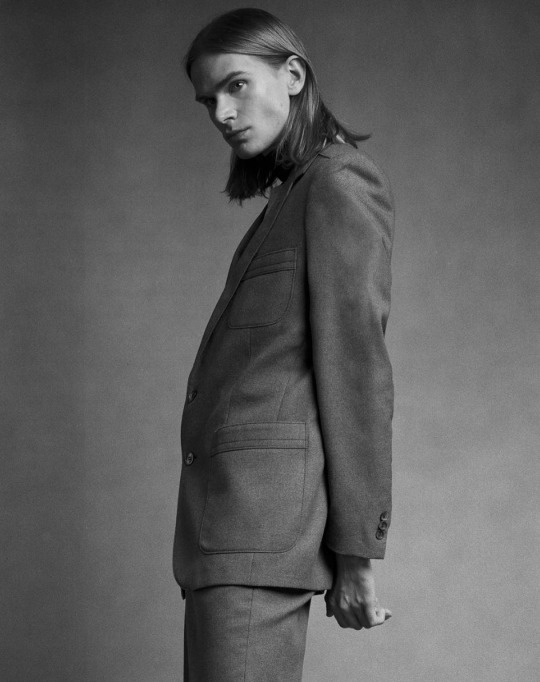
0 notes
Text
25 Famous Quotes by Famous Women That Realistically Depict The Struggles of Dealing With Anxiety and Depression

Most people who suffer from mental health issues, often carry their pain in silence. They’re afraid to open up to anyone for the fear of being misunderstood or reduced to shame. If you are struggling or know someone who is, we encourage you to read these messages by famous and inspirational women including, J.K. Rowling, Kerry Washington, and Kristen Bell among many others.
Anna Wintour
“I think mental health is an area where people are embarrassed … They don’t want to talk about it because somehow they feel they’re a failure as a parent or, you know, they’re embarrassed for their child or they want to protect their child, lots of very good reasons, but mental health I feel is something that you have to talk about. That time from 15 to 16 to your mid- to late 20s — you look grown-up, people think you’re grown-up, but you’re still a kid.” —New York Magazine, May 2015
Mara Wilson
“I’ve basically been an anxious person all my life. I have suffered from anxiety, I have Obsessive Compulsive Disorder, I’ve dealt with depression. I’ve been dealing with it for a very long time, for most of my life. I was an anxious kid and I’m still kind of an anxious adult. I wish somebody had told me that it’s okay to be anxious, that you don’t have to fight it. That, in fact, fighting it is the thing that makes it worse. That pushing it away is really what it is — it’s the fear of fear. And that, you know, it’s okay to be depressed. And also … that it’s not a romantic thing. You don’t have to be depressed. You don’t have to suffer with it. You can get help. You can reach out. Also, sort of on the flip side of that, being anxious and fighting that anxiety is actually just going to make it worse. I wish that I had fought my depression and not fought my anxiety as much. When you face anxiety, when you realize what it is, when you understand that it’s just this false alarm in your body, then you can work with it. Then you can overcome it.” —Project UROK, April 2015
Charlotte Rampling
“For me, depression was like a Gremlin sitting here [on my shoulder] like the creature from a low-budget horror movie. I’m fine now. We’ll see when I get back. ‘You thought it was all right. Not so fast, mate!’” —The Telegraph, May 2013
J.K. Rowling
“I think I had tendencies toward depression from quite young. It became really acute when I was sort of twenty-five to twenty-eight was a dark time. It’s that absence of feeling — and it’s even the absence of hope that you can feel better. And it’s so difficult to describe to someone who’s never been there because it’s not sadness. Sadness is — I know sadness — sadness is not a bad thing. You know? To cry and to feel. But it’s that cold absence of feeling — that really hollowed-out feeling. That’s what the Dementors are. And it was because of my daughter that I went and got help.” —The Oprah Winfrey Show, October 2010
Gloria Steinem
“I myself cried when I got angry, then became unable to explain why I was angry in the first place. Later I would discover this was endemic among female human beings. Anger is supposed to be ‘unfeminine’ so we suppress it — until it overflows. I could see that not speaking up made my mother feel worse. This was my first hint of the truism that depression is anger turned inward; thus women are twice as likely to be depressed.” —My Life on the Road, October 2015
Aparna Nancherla
“I would say depression is one of those things that sublets space in your head, so no matter how far away you get away from it, it exists as a somewhat permanent houseguest. So while it can significantly impede my productivity and mood, it also very much contributes to my point-of-view and sense of humor. … One of the unexpected positives of depression for a lifelong perfectionist is you worry less about failure, in that showing up or engaging, regardless of quality, can be an accomplishment in and of itself.” —Splitsider, March 2016
Caitlin Moran
“What do I say to you girls — you beautiful girls? You girls who are having the Bad Year — the Bad Year where you cannot remember why you were happy aged 12, and cannot imagine being happy at 21? … That panic and anxiety will lie to you — they are gonzo, malign commentators on the events of your life. Their counsel is wrong. You are as high, wired and badly advised by adrenaline as you would be by cocaine. Panic and anxiety are mad, drugged fools. Do not listen to their grinding-toothed, sweaty bullshit … And the most important thing? To know that you were not born like this. You were not born scared and self-loathing and overwhelmed. Things have been done — which means things can be undone. It is hard work. But you are not scared of hard work, compared with everything else you have dealt with.” —Stylist UK, March 2016
Amy Tan
“Whatever it is that causes it, I think it’s just always going to be there. Part of it is having had a suicidal mother and maybe the things that have happened in my life … Like a lot of people, I had a resistance [to taking antidepressants], thinking that emotional or mental problems are things that you can deal with other than through medication. I also didn’t want anything to affect me mentally. But what a difference! And I thought, ‘Boy, what a different childhood I might have had had my mother taken antidepressants.’” —Time, March 2001
Princess Diana
“I was unwell with post-natal depression, which no one ever discusses … and that in itself was a bit of a difficult time. You’d wake up in the morning feeling you didn’t want to get out of bed, you felt misunderstood, and just very, very low in yourself … Maybe I was the first person ever to be in this family who ever had depression or was ever openly tearful. And obviously that was daunting, because if you’ve never seen it before how do you support it? … It gave everybody a wonderful new label — Diana’s unstable and Diana’s mentally unbalanced. And unfortunately that seems to have stuck on and off over the years.
“When no one listens to you, or you feel no one’s listening to you, all sorts of things start to happen. For instance you have so much pain inside yourself that you try and hurt yourself on the outside because you want help, but it’s the wrong help you’re asking for. People see it as crying wolf or attention-seeking, and they think because you’re in the media all the time you’ve got enough attention, inverted commas. But I was actually crying out because I wanted to get better in order to go forward and continue my duty and my role as wife, mother, princess of Wales. So yes, I did inflict upon myself. I didn’t like myself, I was ashamed because I couldn’t cope with the pressures.” —BBC1 Panorama Interview, 1995
Kristen Bell
“When I was 18, [my mom] said, ‘If you start to feel like you are twisting things around you, and you start to feel like there is no sunlight around you, and you are paralyzed with fear, this is what it is and here’s how you can help yourself.’ And I’ve always had a really open and honest dialogue about that, especially with my mom, which I’m so grateful for. Because you have to be able to cope with it. I mean, I present that very cheery bubbly person, but I also do a lot of work, I do a lot of introspective work and I check in with myself when I need to exercise and I got on a prescription when I was really young to help with my anxiety and depression and I still take it today. And I have no shame in that because my mom had said if you start to feel this way, talk to your doctor, talk to a psychologist and see how you want to help yourself. And if you do decide to go on a prescription to help yourself, understand that the world wants to shame you for that, but in the medical community, you would never deny a diabetic his insulin. Ever. But for some reason, when someone needs a serotonin inhibitor, they’re immediately crazy or something. And I don’t know, it’s a very interesting double standard that I often don’t have the ability to talk about but I certainly feel no shame about.” —Off Camera With Sam Jones, April 2016
Elizabeth Gilbert
“When you’re lost in those woods, it sometimes takes you a while to realize that you are lost. For the longest time, you can convince yourself that you’ve just wandered off the path, that you’ll find your way back to the trailhead any moment now. Then night falls again and again, and you still have no idea where you are, and it’s time to admit that you have bewildered yourself so far off the path that you don’t even know from which direction the sun rises anymore. … I took on my depression like it was the fight of my life, which, of course, it was. … I tried so hard to fight the endless sobbing. I remember asking myself one night, while I was curled up in the same old corner of my same old couch in tears yet again over the same old repetition of sorrowful thoughts, ‘Is there anything about this scene you can change, Liz?’ And all I could think to do was stand up, while still sobbing, and try to balance on one foot in the middle of the living room. Just to prove that — while I couldn’t stop the tears or change my dismal interior dialogue — I was not yet totally out of control: at least I could cry hysterically while balanced on one foot.” —Eat, Pray, Love, February 2006
Susan Sontag
“Depression is melancholy minus its charms — the animation, the fits.” —Illness As Metaphor, 1978
Miley Cyrus
“[Depression]’s more of an issue than people really want to talk about. Because people don’t know how to talk about being depressed — that it’s totally okay to feel sad. I went through a time where I was really depressed. Like, I locked myself in my room and my dad had to break my door down. It was a lot to do with, like, I had really bad skin, and I felt really bullied because of that. But I never was depressed because of the way someone else made me feel, I just was depressed. And every person can benefit from talking to somebody. I’m the most antimedication person, but some people need medicine, and there was a time where I needed some too. So many people look at [my depression] as me being ungrateful, but that is not it — I can’t help it. There’s not much that I’m closed off about, and the universe gave me all that so I could help people feel like they don’t have to be something they’re not or feel like they have to fake happy. There’s nothing worse than being fake happy.” —Elle, April 2014
Elizabeth Wurtzel
“That’s the thing I want to make clear about depression: It’s got nothing at all to do with life. In the course of life, there is sadness and pain and sorrow, all of which, in their right time and season, are normal — unpleasant, but normal. Depression is an altogether different zone because it involves a complete absence: absence of affect, absence of feeling, absence of response, absence of interest. The pain you feel in the course of a major clinical depression is an attempt on nature’s part (nature, after all, abhors a vacuum) to fill up the empty space. But for all intents and purposes, the deeply depressed are just the walking, waking dead.” —Prozac Nation, 1994
Lena Dunham
“I feel like there’s this glamour, when you look at like a Tennessee Williams play, where the woman who has a psychological illness is in a fur, laid out on a chaise. Whereas in reality, a woman with mental illness or a woman struggling with her psychological wellbeing is often in sweats and in a T-shirt that used to belong to her dad and is covered in food bits. … I’ve always been anxious, but I haven’t been the kind of anxious that makes you run ten miles a day and make a lot of calls on your Blackberry. I’m the kind of anxious that makes you be like, ‘I’m not going to be able to come out tonight, tomorrow night or maybe for the next 67 nights.’” —Refinery29’s RIOT series, May 2016
Sarah Silverman
“I first experienced depression when I was 13. I was walking off a bus from a school camping trip. The trip had been miserable: I was, sadly, a bed wetter, and I had Pampers hidden in my sleeping bag — a gigantic and shameful secret to carry. … You know how you can be fine one moment, and the next it’s, ‘Oh my God, I f—king have the flu!’? It was like that. Only this flu lasted for three years. My whole perspective changed. I went from being the class clown to not being able to see life in that casual way anymore. I couldn’t deal with being with my friends, I didn’t go to school for months, and I started having panic attacks. People use ‘panic attack’ very casually out here in Los Angeles, but I don’t think most of them really know what it is. Every breath is labored. You are dying. You are going to die. It’s terrifying. And then when the attack is over, the depression is still there. Once, my stepdad asked me, ‘What does it feel like?’ And I said, ‘It feels like I’m desperately homesick, but I’m home.’” —Glamour, October 2015
Kerry Washington
On seeing a therapist
“I say that publicly because I think it’s really important to take the stigma away from mental health. … My brain and my heart are really important to me. I don’t know why I wouldn’t seek help to have those things be as healthy as my teeth. I go to the dentist. So why wouldn’t I go to a shrink?” —Glamour, April 2015
Kristen Stewart
“Between ages 15 and 20, it was really intense. I was constantly anxious. I was kind of a control freak. If I didn’t know how something was going to turn out, I would make myself ill, or just be locked up or inhibited in a way that was really debilitating … At one point, you just let go and give yourself to your life. I have finally managed that and I get so much more out of life. I’ve lived hard for such a young person, and I’ve done that to myself — but I’ve come out the other end not hardened but strong. I have an ability to persevere that I didn’t have before. It’s like when you fall on your face so hard and the next time, you’re like, Yeah, so? I’ve fallen on my face before.” —Marie Claire, August 2015
Cara Delevingne
“This is something I haven’t been open about, but it’s a huge part of who I am. All of a sudden I was hit with a massive wave of depression and anxiety and self-hatred, where the feelings were so painful that I would slam my head against a tree to try to knock myself out. I never cut, but I’d scratch myself to the point of bleeding. I just wanted to dematerialize and have someone sweep me away … I thought that if I wanted to act, I’d need to finish school, but I got so I couldn’t wake up in the morning. The worst thing was that I knew I was a lucky girl, and the fact that you would rather be dead … you just feel so guilty for those feelings, and it’s this vicious circle. Like, how dare I feel that way? So you just attack yourself some more.” —Vogue, July 2015
bell hooks
“Isolation and loneliness are central causes of depression and despair. Yet they are the outcome of life in a culture where things matter more than people. Materialism creates a world of narcissism in which the focus of life is solely on acquisition and consumption. A culture of narcissism is not a place where love can flourish.” —All About Love: New Visions, January 2001
Carrie Brownstein
“Sometimes I feel like it’s a lifelong struggle. I have started to meditate. I exercise, but not at a gym. I get out. I’ve been reading a lot. I’ve been trying to immerse myself in the narratives of other people. I try to not isolate myself as much. It is really hard. People that are sensitive, you just feel too porous sometimes. There’s this inertia that sets in and it’s hard to get out of bed. I think knowing that other people go through it is really reassuring. Some of my most motivated, brilliant friends, when they tell me that they’re sad, it’s like, I’m sad for them, and then I’m relieved for the world. I’m like: ‘See: we all feel like this.’” —Pitchfork, October 2015
Kate Moss
“I had a nervous breakdown when I was 17 or 18, when I had to go and work with Marky Mark and Herb Ritts. It didn’t feel like me at all. I felt really bad about straddling this buff guy. I didn’t like it. I couldn’t get out of bed for two weeks. I thought I was going to die. I went to the doctor, and he said, ‘I’ll give you some Valium,’ and Francesca Sorrenti, thank God, said, ‘You’re not taking that.’ It was just anxiety. Nobody takes care of you mentally. There’s a massive pressure to do what you have to do. I was really little, and I was going to work with Steven Meisel. It was just really weird — a stretch limo coming to pick you up from work. I didn’t like it. But it was work, and I had to do it.” —Vanity Fair, October 2012
Tavi Gevinson
“There are a lot of different kinds of sadness, but the two broadest categories are the kind that can be beautiful and cathartic and you’re crying and listening to music and it feels kind of good actually, and the kind where it just sucks and you don’t want to get out of bed and you feel completely trapped. And my methods for both are different. For the beautiful one I just try to see it for what it is, and use it to get out a good cry and enjoy an album or whatever, or spoon with a friend. And with the other kind … the good thing is that these days, nothing feels like the end of the world anymore, whereas in the earlier years of high school, and throughout middle school — and elementary school, actually — that stuff was really hard.” —Rookie, January 2014
Brooke Shields
“If you think you might be suffering from any kind of postpartum mood disorder, or are aware of some preexisting condition in your life that could lead to it, DO NOT WASTE TIME! Get help right away … Don’t be ashamed and don’t disregard what you are feeling. It is better to be proactive. Postpartum depression is extremely treatable, and there are many ways to cope with and get through it. It is important to get educated and talk about how you are feeling. It rarely passes alone or without causing damage … And remember: postpartum depression is beyond your control.” —Down Came the Rain, May 2005
Cheryl Strayed
“Nobody will protect you from your suffering. You can’t cry it away or eat it away or starve it away or walk it away or punch it away or even therapy it away. It’s just there, and you have to survive it. You have to endure it. You have to live through it and love it and move on and be better for it and run as far as you can in the direction of your best and happiest dreams across the bridge that was built by your own desire to heal.” —Tiny Beautiful Things: Advice on Love and Life From Dear Sugar, July 2012
Photography Credit:1, 2, 3, 4
h/t: nymag
1K notes
·
View notes
Photo
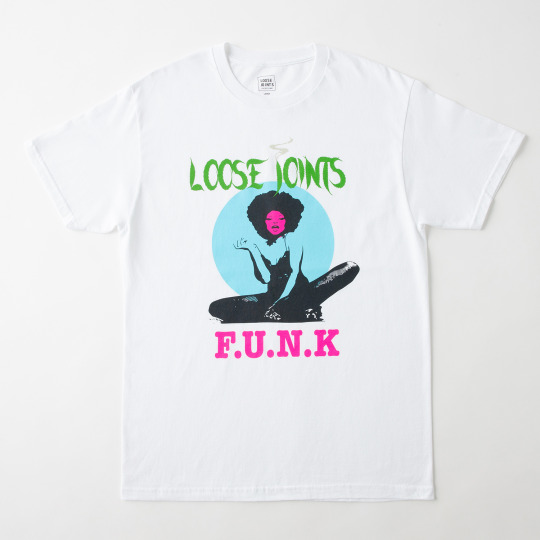






BARNZLEY
Founder of the shirt label [Wemblex]
In 1988, the United Kingdom's Second Summer of Love Movement broke out in the spring and by the summer it became a social phenomenon throughout the United Kingdom.
In fact, there is a magazine that seems to have predicted its arrival. That magazine is the i-D Magazine combined issue of December 1987 and January 1988.
The smiley face artwork on the cover was produced in November 1987. The artwork design was created by Barnzly - who was an i-D stylist at the time and then went on to make the CHANEL No. 5 (exhibited at the Victoria and Albert Museum), Hermes and Gucci bootleg T-shirts which were popular in the UK and Japan in 1987.
At the time, now well known brands like Hermes and Gucci were very unpopular and they were ‘’dead’’ on the street.
However, thanks to the influence of New York hip-hop culture, bootleg T-shirts were created and then bootlegged and released by Barnzly in 2018.
Barnzly, taking over the context of Malcolm McLaren, was engaged in Acupuncture in 1993, Lowrider London in 1997, Zolter the Maginificient in 2002, A Child of Jago in 2007, Thunders UK in 2015, Wemblex in 2018 and Wemblex in 2019 - the “Living London Street Culture" and was involved with .wave Institute and others.
The exchange between UK and Japan runs deep and many collaborations are still continuing to this day.
シャツレーベル”Wemblex”の創業者。1988年、イギリスのセカンド・サマー・オブ・ラブ・ムーヴメントは、春からブレイクして、夏にはイギリス全土の社会現象となった。実は、その到来を予言していたかのような 一冊の雑誌が存在する。i-Dマガジン1987年12月1988年1月合併号である。 表紙のスマイリーフェイスのアートワークの製作時期は1987年11月。デザインは、当時 i-Dのスタイリストであり、CHANEL No.5(ヴィクトリア・アンド・アルバート博物館に 展示)、Hermes、GucciのブートレグTシャツを1987年にイギリスと日本で流行らせたバーンズリーだ。当時、Hermes、Gucciは全くイケているブランドではなく誤解を恐れずにいえばストリートでは”死んでいた”。これらのNYヒップホップ的カルチャー文脈の視点で作られたブートレグTシャツは、本家によってブートレグされて2018年にリリースされている。マルコム・マクラーレンの文脈を引き継ぐバーンズリーは1993年にAcupuncture、1997年にLowrider London、2002年にZolter the Maginificient、2007年にA Child of Jago、2015年にThunders UK、2018年にWemblex、2019年に .wave Instituteなどに携わった「生きるロンドン・ストリートカルチャー」。日本との交流も深く、数多く のコラボレーションが今もなお続いている。
https://www.instagram.com/barnzley
https://www.instagram.com/wemblex_
0 notes
Photo
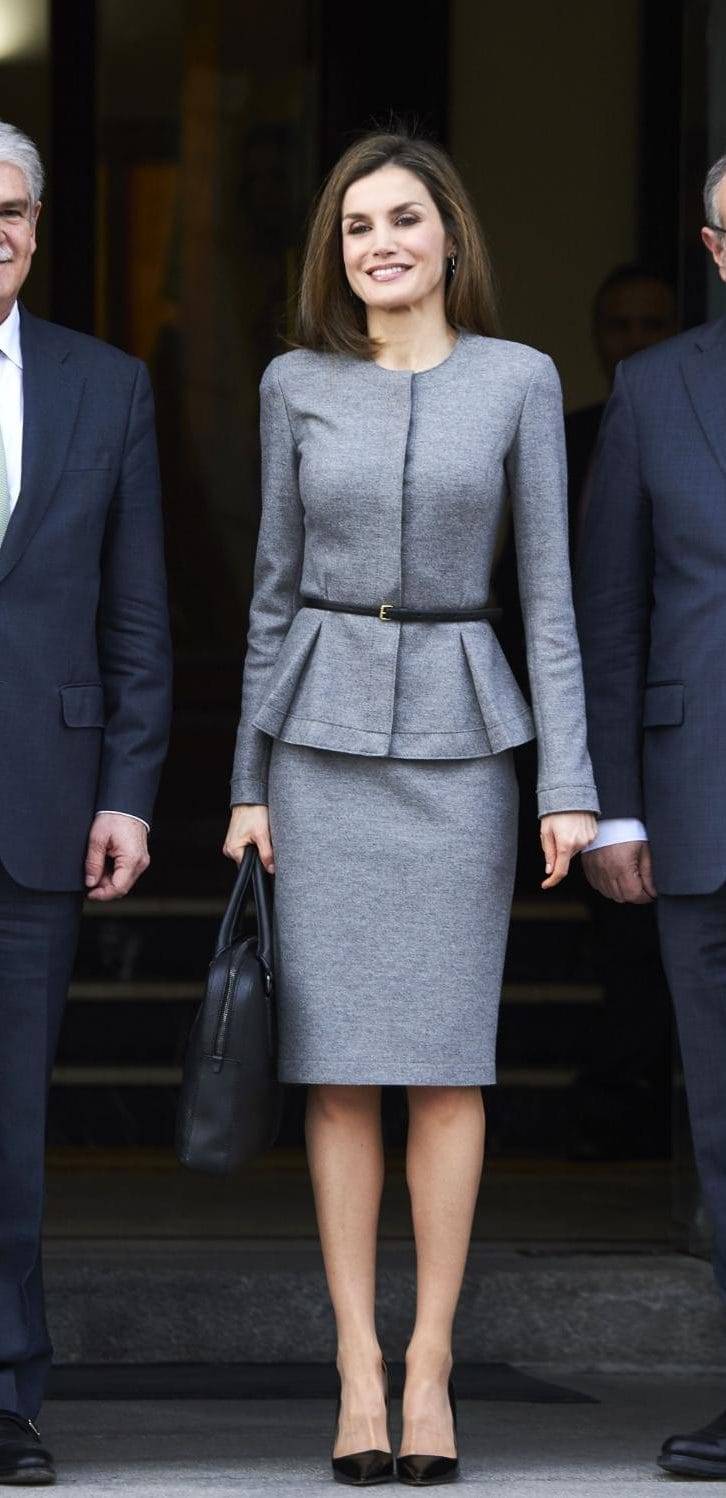
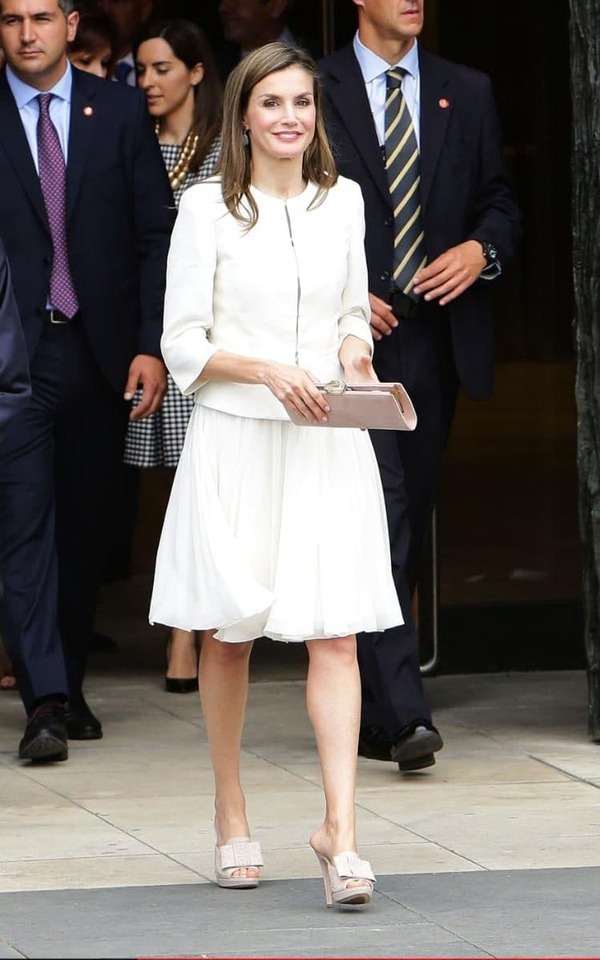



Why Queen Letizia, who visits the UK tomorrow, is the world's most stylish royal
If many little girls dream of being princesses with glittering gowns and diamond tiaras, then their modern-minded, grown-up counterparts could do worse than aspire to the glossy, polished style of Queen Letizia of Spain. Tomorrow, she and her husband King Felipe, who ascended the throne in 2014 following the abdication of his father Juan Carlos, arrive for their first state visit to the UK. Alongside the pomp and circumstance, the three days of engagements offer up the first chance we Brits have had to witness firsthand the woman who is widely credited with reinventing royal style for the 21st century.
Before Letizia and Felipe announced their surprise engagement in 2003, she was already a familiar face in Spain as a newsreader on TVE, the Spanish equivalent of our BBC. She had reported from Ground Zero and Iraq; it was akin to Sophie Raworth or Laura Kuenssberg giving up their starring role on the six o’clock news to marry a Prince. This modern day fairytale came with added frisson, because Letizia had been married briefly already in a civil ceremony.
Her newsreader days stood Letizia in good stead, not just for acting with poise on the world stage, but also for carving out a royal look which is more naturally elegant than many of her European counterparts - only Princess Mary of Denmark and our own Duchess of Cambridge can compete - but also more astutely targeted than the couture predilections of Queen Rania of Jordan.
After marrying in a high-collared, long-sleeved dress with a 15ft train by Manuel Pertegaz (a couturier recommended for the job by her mother-in-law, Queen Sofia), she incorporated professional staples- tailored blazers, sleek pencil skirts and kick flare black trousers- into her working royal wardrobe. Not for her flippy floral dresses prone to blowing up In the breeze. Letizia, sucker for a lithe silhouette, understood the leg-lengthening, go-with-anything power of a nude pump before they were even a twinkle in Kate Middleton’s eye but also had the imagination to pepper in alternatives.
Felipe Varela became Letizia’s dresser-in-chief, creating bespoke looks for her most important engagements. He designed the pristine white dress coat with subtly patriotic yellow and red embellishments which she wore to her husband’s coronation and is responsible for most of the strikingly glamorous gowns and cocktail dresses which she has worn for state banquets. They are often eye-catchingly red and, like Michelle Obama, she is a devotee of sleeveless looks which show off her athletically sculpted upper arms.
Their partnership hasn’t been without its suggestions of scandal, with Spanish media accusing some of Varela’s designs as being a little too similar to those of Oscar de la Renta. But a Spanish Queen must, for the most part, wear Spanish; when Jackie Kennedy became First Lady, she had her personal dresser Oleg Cassini reflect the haute European simplicity she adored so that she could still be seen to be wearing American.
Letizia’s most adroit act has been the way she has altered her style to reflect the economic struggles of her country. During straitened times, she has been just as likely to wear clothes off the rails of one of Spain’s world-famous high street stores, like Zara or Mango. She is also well-versed in the art of repeat wearing, just last week reviving a miniature blue Varela handbag she’d previously worn seven years ago.
While sophisticated staples have formed the basis of her look, Letizia hasn’t been afraid to experiment. She is known as the ‘earring queen’; Valencia-based Coolook and Barcelona’s Tous jewellers are go-tos for interchangeable 200 euro styles made from semi-precious stones in softly flattering hues. She is also one of very few royal women to veer into jumpsuits, with favourites coming from Massimo Dutti and Hugo Boss.
“She knows when to play it safe and when to take risks,” says Elizabeth Vollman, who catalogues every detail of Letizia’s outfits on her blog ‘Queen Letizia Style’. “She epitomises modern royal style but what I love most about her is the confidence she exudes regardless of what she wears.” Vollman says that her readers appreciate it when the Queen wears a budget-friendly or brand new outfit and “applaud her when she takes a sartorial risk”. The choice which she says caused the most heated debate was a pair of clear plastic perspex heels by Magrit which were dubbed her “real-life Cinderella shoes” - “they did raise some eyebrows,” Vollman laughs.
Until 2015, Letizia was self-styled, but has now recruited Eva Fernández, a former fashion editor at Spanish Cosmopolitan magazine, as her stylist. While her own fashion choices have always been appropriate and stylish since her marriage in 2004, no doubt her husband’s ascension to the throne in 2014, and her new role as Queen, added to the pressure on Letizia - and with a Queen’s full schedule, it’s no wonder she sought outside help. The duo were pictured out shopping together in Madrid earlier this year, both clad head-to-toe in cool black, the Queen in brogues and an oversized patterned scarf while Fernández wore skinny leather trousers and leopard-print slippers. She is credited for introducing 44 year-old Letizia to more daring options- like culottes, leather jackets and pussy bow blouses- and encouraging her to defy those who preach that it is ‘inappropriate’ for her to wear shorter length skirts.
So, what can we expect to see Spain's style queen wearing in the UK this week? A diplomatic choice could be a look by Loewe, the Spanish fashion house whose current creative director is Northern Irish designer Jonathan Anderson, but his avant-garde designs could be an experimental step too far, even for Letizia. In April, she wore a fabulous red caped dress by Stella McCartney, who would be an inspired choice for tomorrow night’s State Banquet- could it even be time for a jumpsuit at Buckingham Palace?
Source
8 notes
·
View notes
Photo

Lou studied Fashion Design at the London College of Fashion where she found her passion for hair and make up which, in turn, led to her assisting renowned hair stylist Benjamin Mohapi. It was not long after this that she was snapped up by the glam team on ITV’s X Factor where she was a full time member of the hair team. From here Lou moved into celebrity grooming, overseeing Olly Murs’ personal hair and make up design at the launch of his solo career.
After working with Olly, Lou began a five year adventure with One Direction as their primary hair and make up stylist, from touring the world to international TV appearances and gracing the front cover of magazines such as GQ, Lou still works closely with the individual members of the band.
As well as strong grooming credentials, Lou has had editorial work featured in Vogue, GQ, Miss Vogue, Glamour, Cosmopolitan and Wonderland to name but a few. She has also had her own book published, ‘The Craft: DIY Hair & Beauty’ – a guide to how to style up your own look from home.
Lou has worked with many international brands including Fudge Urban’s street line of hair products and has recently worked on a series of videos for Maybelline, Con Air, and Vogue UK, creating how-to videos for wide-reaching social media campaigns. She has hosted Facebook Live content for Grazia and interviewed Kendall Jenner for Cosmopolitan.
IN 2015 she was appointed as Elle magazine’s beauty columnist under the title ‘Beauty Extremist’ where she documents her unique and cutting edge experimentation in hair, skincare and make up.
Lou also works as a director of Bleach London, which is the world’s first hair salon to focus on colouring rather than cutting. Bleach has sold over £10 milllion worth of product globally and is sold in over 1200 retail spaces in the UK. 2017 will see Lou launch the Bleach London make up range.
Lou’s social media following is strong, with over 3 million Instagram followers and 2 million Twitter followers. She says that she aspires ‘to look like I’ve been up all night, preferably in a sweaty club, partying with Kate Moss.’
- Lou’s Money Management Profile
9 notes
·
View notes
Text
Meghan Markle's outfits cost eye-watering £700k - more than any other European royal - Mirror Online
New Post has been published on https://harryandmeghan.xyz/meghan-markles-outfits-cost-eye-watering-700k-more-than-any-other-european-royal-mirror-online/
Meghan Markle's outfits cost eye-watering £700k - more than any other European royal - Mirror Online
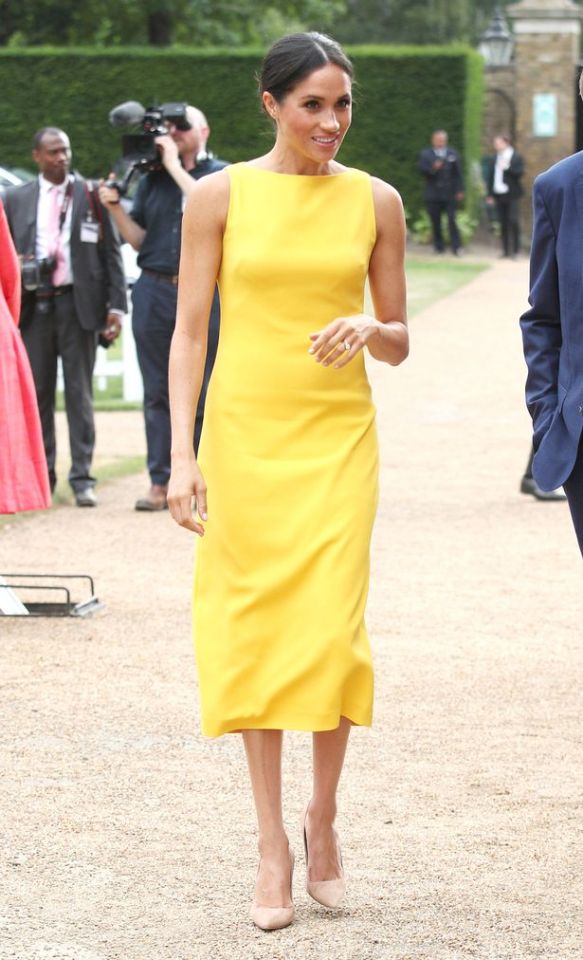
The Duchess of Sussex’s style has wowed the nation but looking so good comes with a hefty price tag.
Meghan, 37, wore outfits worth £406,662 last year, plus her Givenchy wedding gown, said to cost £387,000.
This week the pregnant royal, wearing a £2,600 Oscar de la Renta coat, turned stylist at a West London charity by helping job seekers choose clothes for interviews.
Meg’s wardrobe cost over five times more than sister-in-law Kate’s, according to royal style site UFO No More.
It also dwarfed those of other royals in Europe.
Here’s a quick peek at these top families’ fashion sense…
(Image: Getty Images)
Meghan, Duchess of Sussex
£406,662
Meghan is a designer’s dream. Whatever she gives the royal seal of approval sells out quickly. On a trip to Edinburgh in February, she wore a £1,995 Black Watch Burberry design coat. Hours later identical numbers were selling on eBay for almost £3,000.
A version of the Stella McCartney halter-neck gown she wore for her wedding reception was quickly snapped up at £4,500 after the designer released a near identical number. Meghan’s £400k price tag includes a Cartier reflection bracelet and matching earrings, but the £185,000 set may have been a gift from Prince Charles.
In Britain, female royals can request to borrow garments from the likes of Chanel, Alexander McQueen and Kate’s favourite, Catherine Walker, but protocol dictates they must be returned.
Wardrobe staples are funded mostly from family money through Prince Charles’s vast estate. And Meghan has £5million from her career as an actress.
Crown Princess Mary of Denmark (Image: Getty Images)
Crown Princess Mary of Denmark
£92,539
A fan of couture, the Crown Princess is a style icon. But looking good does not come cheap.
The 46-year-old mixes up her wardrobe with local and international designers.
She wowed in a Jesper Hovring velvet gown at Prince Charles’s 70th at Buckingham Palace. This year, she rocked up to a New Year reception in a dove grey dress – which she wore to the same do in 2016.
Countess of Wessex (Image: UK Press via Getty Images)
Countess of Wessex
£77,998
Even a visit to a dairy farm is an opportunity for Sophie to shine.
The mum-of-two was in Cornwall last months in a blue coat, matching jumper dress and fab boots. It is statement coats like this that keep the 53-year-old countess bang on trend. But she says: “My track record in fashion has not always been as good as it is today but we learn in time.”
Catherine, Duchess of Cambridge (Image: SWNS.com)
Catherine, Duchess of Cambridge
£72,251
Kate is known for her love of the High Street – and wearing outfits again and again. But the price tag is still eyewatering.
In 2017 she wore £119,000 of new clobber but maternity leave with Prince Louis may explain this lower figure.
She owns Topshop and Reiss dresses and was spotted last year in a £220 crimson Boden coat at Great Ormond Street Hospital. And Kate, 37, put on a £225 Lacorine hat for church in Sandringham.
Supporting British designers, Kate, is a big fan of Catherine Walker.
Princess Charlene of Monaco (Image: AFP/Getty Images)
Princess Charlene of Monaco
£55,252
The epitome of style, Princess Charlene is a former Olympic swimmer whose physique suits just about everything she wears.
In July she graced a Red Cross Gala in a chainmail Versace gown, right, worth around £4,500.
Charlene, 40, favours Swiss brand Akris. She wore their white winter coat and jersey dress to present her twins Jacques and Gabriella to the world in 2015.
Queen Maxima (Image: Getty Images)
Queen Maxima
£51,122
The Queen of the Netherlands is bold in her outfit choices – with bright colours, funky florals and big hats.
But Maxima, 47, brought a touch of regal glamour to a Buckingham Palace banquet in October, in a long blue gown with sheer sleeves, left.
And her tiara, once owned by Queen Mary II of England, made a real statement – it includes a massive diamond, 39.75 carats.
Princess Beatrice (Image: Getty Images)
Princess Beatrice
£50,818
Not known as a fashion icon, Beatrice, 30, is a new entry on the list.
Haunted by her 2011 headwear at William and Kate’s wedding, last year she surprised with outfits such as her purple number for the Met Gala, rock chic at the Serpentine Gallery and beaded teal dress for Harry and Meghan’s wedding.
Princess Marie of Denmark (Image: Getty Images)
Princess Marie of Denmark
£44,496
This princess loves to rock a diamond or two – priciest so far was a selection of jewels from muchloved designer Christine Hvelplund.
The two bracelets and earrings she wore for Crown Prince Frederik’s 50th birthday, left, cost a cool £20,000.
Yet despite the love of expensive jewellery, her highly accessible style is much more relaxed than most royals.
Marie, 42, is not averse to slipping on jeans, and is often seen in simple skirt suits at formal events.
Crown Princess Victoria of Sweden (Image: IBL/REX/Shutterstock)
Crown Princess Victoria of Sweden
£39,751
The Swedish Royal family champion Scandinavian designers. UFO No More said 70 per cent of their pieces are Nordic creations.
Victoria even wore black dress from Sweden’s H&M when it collaborated with Erdem on a wardrobe that started at £50.
In December she attended the Nobel Prize Ceremony in a vintage Nina Ricci gown which her mother Queen Silvia wore to the ceremony in 1995.
Queen Letizia (Image: Getty Images)
Queen Letizia
£38,272
Spain fashi wom roya SPAIN’S most fashionable woman is another royal who spends her cash on the High Street.
She has been pictured in a £49.99 Zara dress and sporting a £75 ASOS frock.
Last week she turned on the glamour in a floor-length navy skirt and tweed jacket for the Epiphany Day celebrations in Madrid.
Off duty, Letizia, 46, opts for Mango, Zara and Uterque outfits.
Crown Princess Mette-Marit of Norway (Image: Getty Images)
Crown Princess Mette-Marit of Norway
£36,992
Princess Mette-Marit, 45, has developed her fashion sense over the years.
The princess, who spent a lot of last year on leave after being diagnosed with lung disease, is perhaps taking tips from her son Marius, 21, said to be working as a style editor at a London mag.
Mette-Marit, voted Hello! magazine’s worst dressed young Royal in 2015, wore a floral gown after announcing her illness in October.
Source: https://www.mirror.co.uk/news/uk-news/meghan-markles-outfits-cost-eye-13849672
0 notes